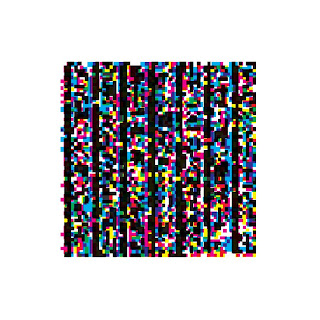


Here are some new generated images from modified version of my Pixel-time patch. This one turn films into timed pixel grids by calculating the resolution based on number of frames in the video and then captures on pixel per frame and flows from the top left down to the bottom right.
I have some that capture the pixel based on its current read-write position and others that capture the average of all the pixels on screen.
So far, there isn't much going on with this as it only produces abstract grid compositions. I am currently working to expand the functionality of this program as well as find an actual use for it.
























.jpg)
.jpg)

